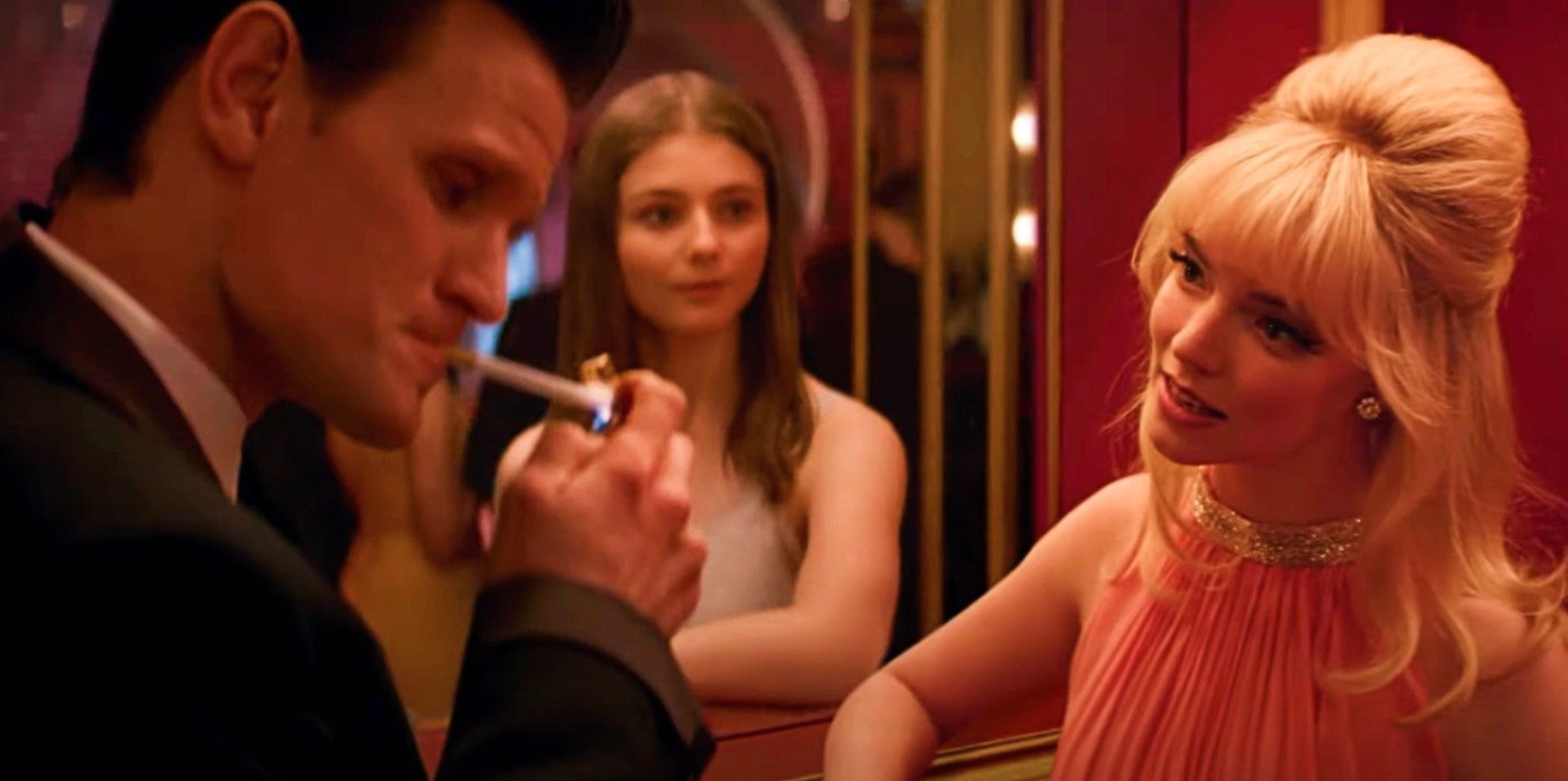“Last Night in Soho” is like nothing director Edgar Wright has ever done before. Best known for “Shaun of the Dead,” “Scott Pilgrim vs. the World,” and “Baby Driver,” Wright has mostly made fast-paced comedies with a distinct stylistic touch. Switching genres, he’s made a psychological horror movie that isn’t quite as polished as his earlier work, but isn’t an entirely failed experiment.

c/o YouTube.com/Focus Features
Viewers meet the protagonist, Eloise (Thomasin McKenzie), when she moves from her small country town to London to study fashion. After being bullied by her roommate and fellow students, she moves out of the dormitory and finds an apartment in the Soho neighborhood, managed by Mrs. Collins (Diana Rigg). When she goes to bed, she’s transported back in time, into the same neighborhood in the 1960s.
With the move into the past, Eloise transforms into Sandie (Anya Taylor-Joy), a wannabe singer who is everything Eloise isn’t: confident, glamorous, and popular. Sometimes, the two seem to inhabit the same body, while other times Eloise watches Sandie from a distance. Some details suggest a spiritual and physical connection between the two, while others point to a more straightforward ghost story. Mirrors show a different world: sometimes Eloise is Sandie in the mirror, sometimes Sandie is Eloise.
Sandie struts through London in a flowing pink dress and immediately seduces club manager Jack (Matt Smith). At first, both women are entranced by the glitz and glamor of this world. Back in present-day London, Eloise changes her hair to match Sandie and begins designing a replica of Sandie’s dress.
Over time, ’60s Soho turns from dream to nightmare. Instead of singing for crowds, Sandie makes her money going on dates with sleazy men. Jack becomes her pimp, not her manager. Faceless men haunt her. When Eloise tries to escape this world, Sandie and the men continue to follow her.
Earlier sequences suggest something vague and experimental, while the later parts of the movie are a more straightforward horror thriller. Both stretches work on their own terms but added together, they produce a bit of a question mark.
Stylistically, Wright is playing comfortably out of his wheelhouse. The dreamy world of ’60s London is brilliantly realized with flashing lights, flowing garments, and music choices. Dramatically, however, Wright is still in the world of his earlier movies. “Baby Driver” and “Hot Fuzz” are grounded in straightforward dramatic action with simple and compelling characters. With “Soho,” Wright knows that he needs to slow down, but not how or why. The style is so rich that it makes you wish the writing was, too. The script (co-written by Wright and “1917” writer Krysty Wilson-Cairns) never clearly establishes Eloise’s driving psychology or nails down what exactly to say with its themes.
The most puzzling element of the movie is Eloise’s dead mother, who continues to haunt her. We’re told that her mother committed suicide when Eloise was young, and it’s implied that Eloise has similar mental health issues. Perhaps the story has something to do with her trauma. None of her history is properly explored or dramatized, especially once the movie becomes a jumpscare-driven ghost story.
It’s not quite a mess, but it’s not neat, either. The joy of Wright’s earlier movies is in how precisely everything seems to work together. Every joke, every shot, every song is put together for a tight narrative ride. “Last Night in Soho” still has elements of Wright’s stylistic control. You’ll be enthralled by the world of ’60s London and scared once it starts to crack. With his latest film, Wright has proven that he can direct a different kind of movie, but not necessarily that he can write one.
Jacob Silberman-Baron can be reached at jsilbermanba@wesleyan.edu.